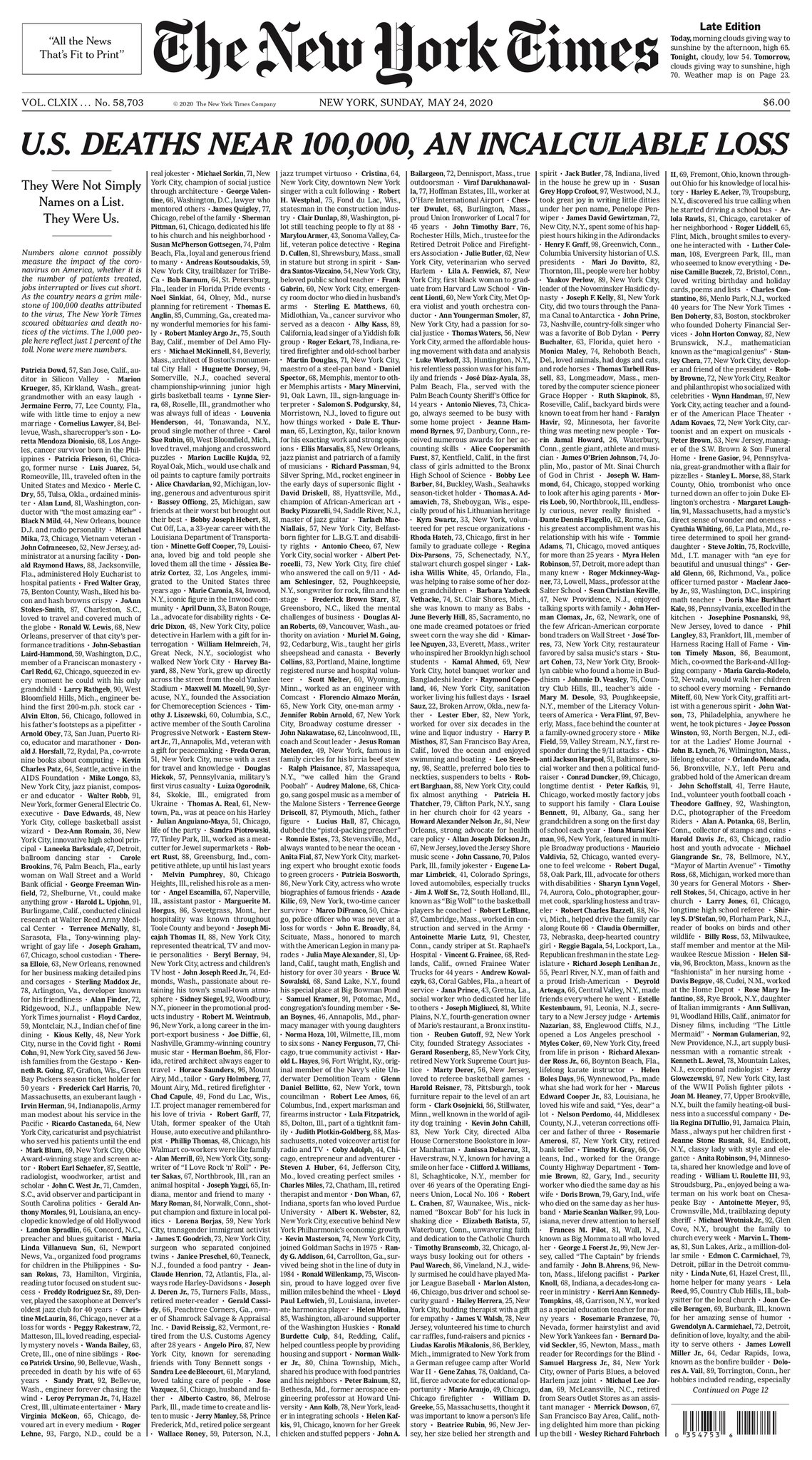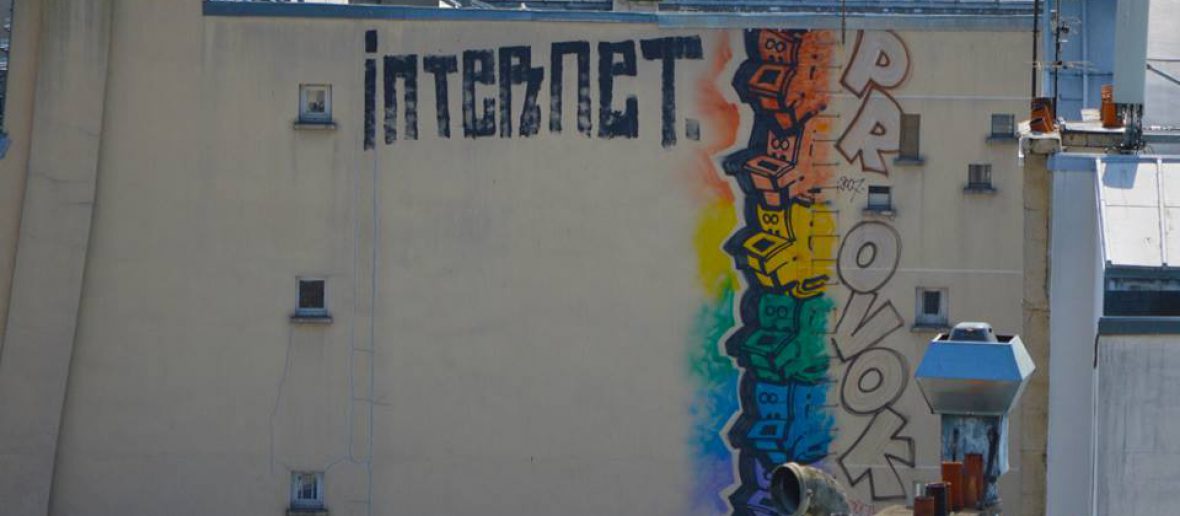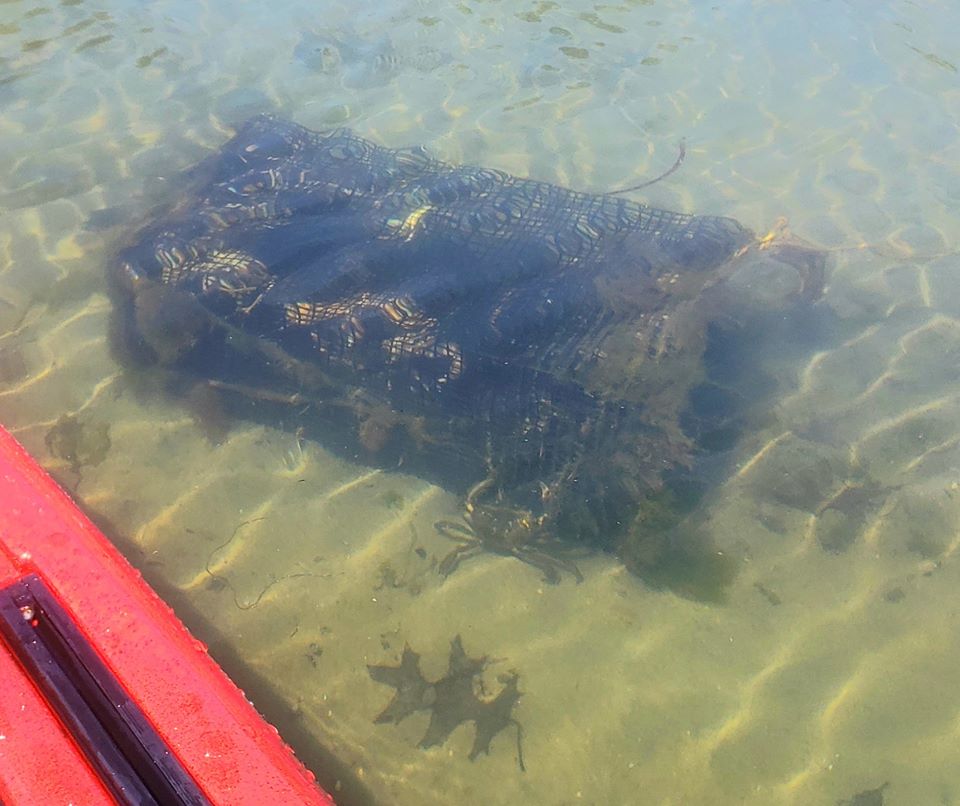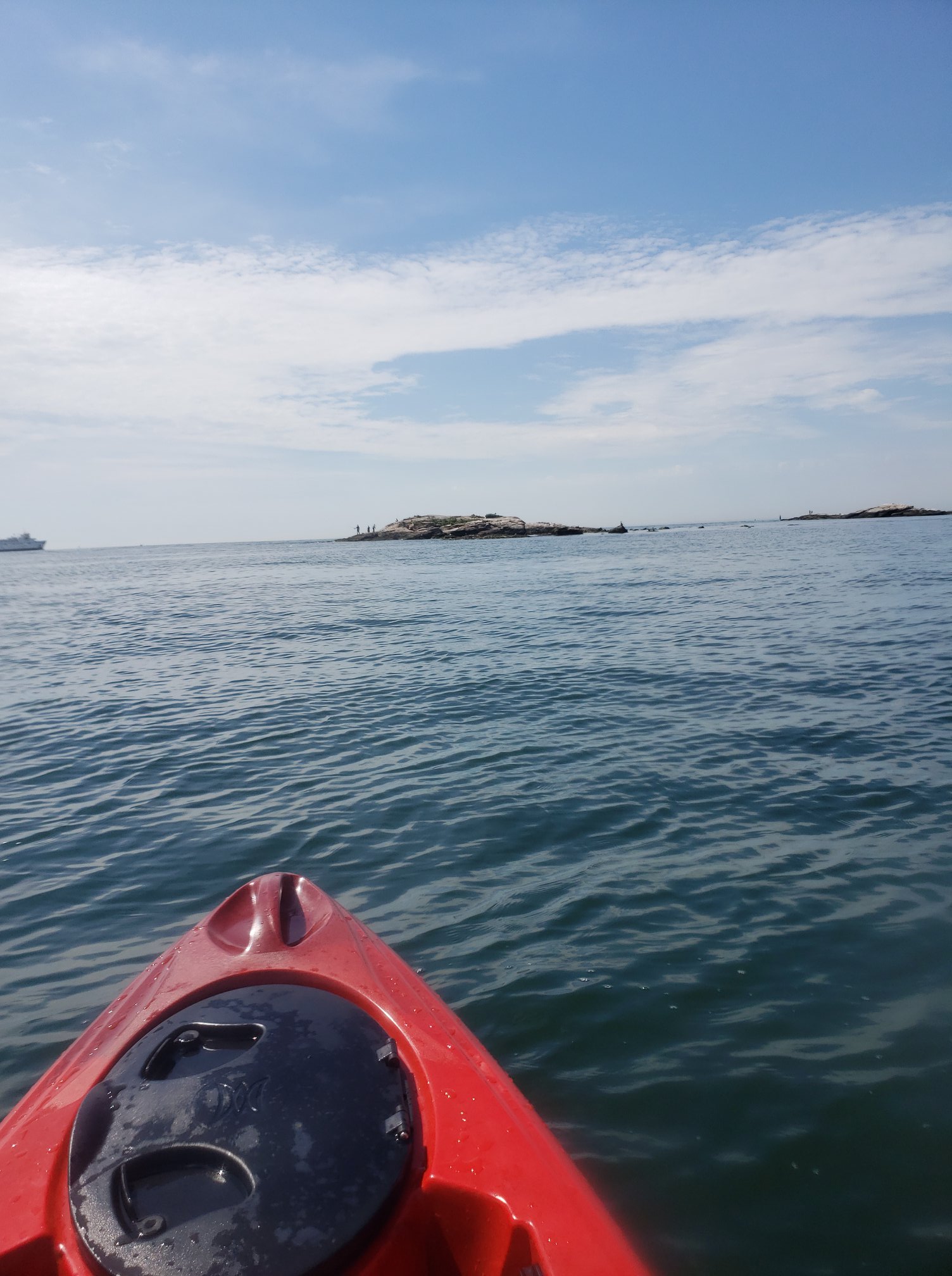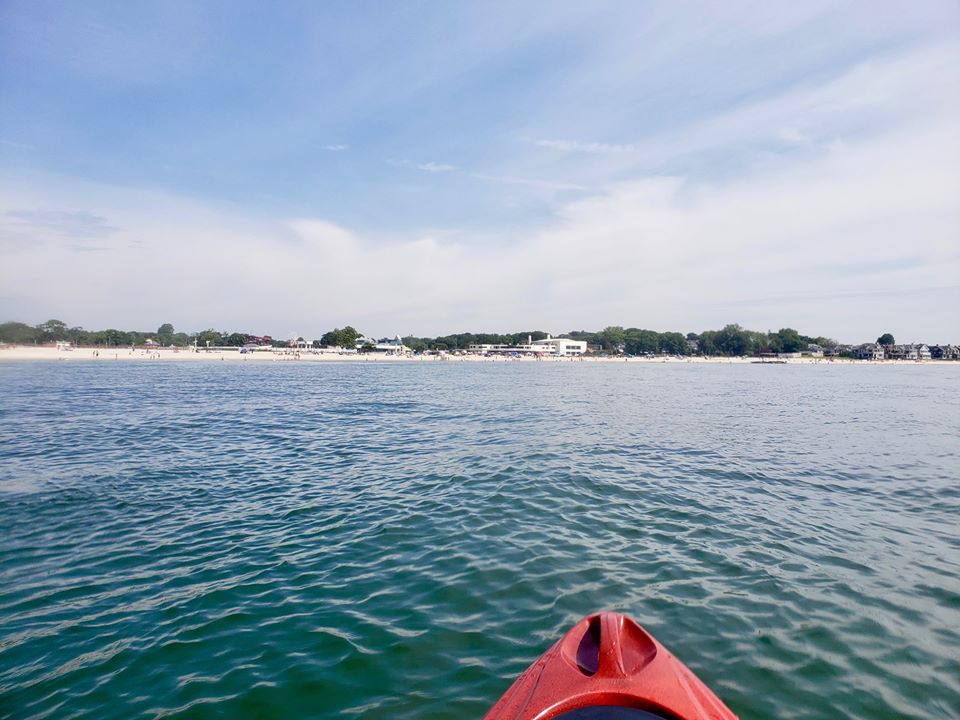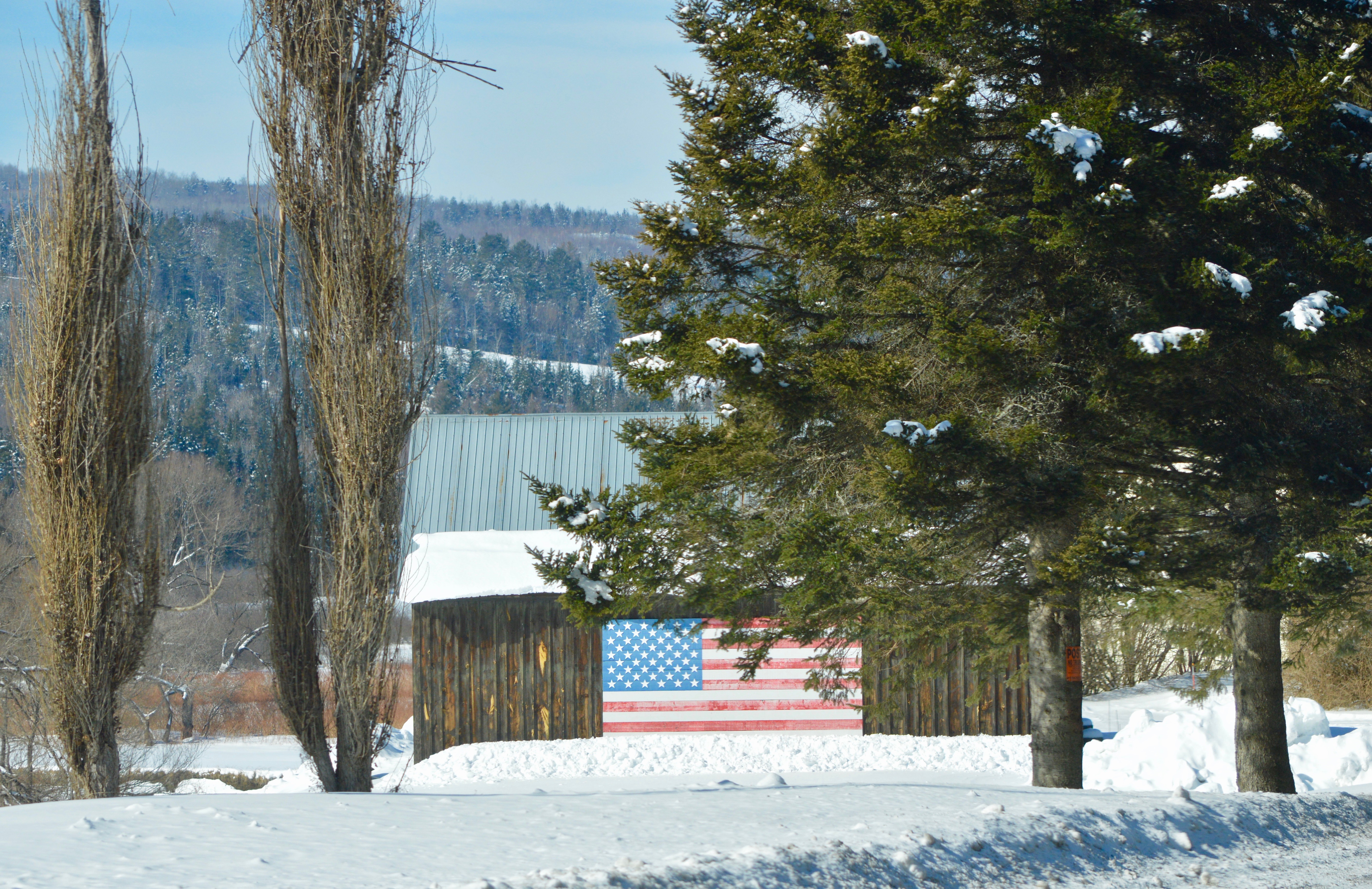There’s a saying that “a picture is worth a thousand words,” and for good reason. Graphics can be a powerful representation, somehow distilling down what is otherwise complex and difficult to process.
This Sunday morning – on the eve of Memorial Day, when we honor our fallen – readers found The New York Times’ front page free of graphics. Yet, the image of 1,000 printed names, a mere fraction of the American lives stolen by a global pandemic, is shockingly graphic.
You may read about the Times’ editorial decision to publish this stark and poignant representation here.
As of this writing moment, an estimated 342,000 people around the world have perished from COVID-19-related illness. Here in the United States, where everything must be politicized nowadays, the figures are undermined. You’ll hear plenty of pundits trying to shirk government’s blame for its slow response, its dragging of feet when mitigation was critical.
They say things like, “If a person has a heart condition or is dying of old age and they contract the virus, are they really dying of COVID-19, or are they dying of those preexisting conditions?” Dr. Deborah Birx was asked to address this at one of the maddening press briefings. She clarified that, in cases of this kind, it is the virus that’s the acute cause of death.
This is not a controversial medical opinion. If a patient is hospitalized for an injury or illness, and while in the hospital contracts an infection and dies, it is the viral infection that kills the person, not the condition that put them there.
But there is good reason to question the figures, which are flawed and fluid, and may, in fact, be conservative estimates at this point. It is unknown how many Americans during these past few months have been sick and died in their residences, in their workplaces, or in the streets, who were never afforded a post-mortem test for COVID-19. The disease is so wildly unpredictable and adept at subterfuge, with symptoms ranging from fever and the obvious respiratory ailments to neurological and vascular breakdowns. Even younger people with no underlying conditions have died of heart failure and massive stroke.
We still have so much to learn and to understand about this virus – known to be exponentially more contagious than flu-like viruses that have proceeded it. We don’t really know how it so effectively spreads. We don’t know why those symptoms vary widely. We can’t even say with certainty that those who have contracted the virus and lived to see the other side of it cannot be re-infected.
This story is not yet written.
Because everything is so politicized and polarized in the nation today, it is not surprising that pundits have stoked the anti-media flames, accusing the Press of somehow manufacturing the story, of inflating it, and causing people to fear for their lives.
I’m of the opinion that a virus that potentially makes you so sick that you feel that you’re drowning – not for minutes, which is what it usually takes for a person to die by drowning – but hours, days, weeks, deserves a perfectly rational level of fear. But if that’s not enough to give all Americans pause, to consider the seriousness and solemnity, certainly the number of deaths should.
97,426.
Our culture relishes comparison.
Those trying to diminish the virus like to compare it to annual flu deaths. Various strains of flu virus are to blame for 24,000 to 62,000 American deaths each year, measured over the course of 12 months. Nearly 100,000 people have died from COVID-19 in fewer than four.
It is true that more than 600,000 people died from cancers in the U.S. last year. But can you imagine if we simply gave up the quest for answers and cures?
An estimated 58,200 American soldiers died fighting the Vietnam War, a gut-wrenching statistic that erupted the country in protest. Can you imagine if the Press never reported on it, or never published the Pentagon Papers?
Nearly 3,000 people were slain on 9/11. Our government used those dead as opportunity to invade two countries. Can you imagine if the Press merely shrugged it off? Can you imagine if politicians and their “fans” told grieving, frightened Americans to “just move along, nothing to see here?”
I’m in the midst of writing a 2,000-word piece for Editor & Publisher magazine about how news organizations are covering the pandemic, for which I’ve spoken to a number of news organizations – from large national newspapers and broadcast companies to small community and non-profit digital publications. It has flipped newsrooms upside down, shaking them like snow globes, with more stories than they can tell falling down all around them.
Every single story today is colored by COVID-19, because the effects are far-reaching and disturbingly influential: Economics, business, labor force and unemployment. Critical public health and safety. Long-term healthcare. Education and schools. Parenting and caretaking. The food chain and food banks. The supply chain. Personal interest stories, and on and on.
And the Press must cover all these angles. To ignore them is a dereliction of duty.
It more than pains me – it makes me irate – when I see and hear people suggest that the Press shouldn’t cover this virus, that we shouldn’t even tell the stories of the individuals who died – people who lived and loved and contributed to the society in some way.
How completely selfish and vulgar it is to look at Press coverage and find it to be inconvenient and uncomfortable because it doesn’t fit into a preconceived, politically crafted narrative.
It’s insensitive, to put it mildly, to suggest that we shouldn’t tell the stories about the aftermath for their families, of grieving from afar and then alone. It’s foolish to ignore the challenges and burdens it has placed upon us, not just on commerce and businesses, but literally on every single one of us – here and around the world.
Pandemic is profound.
I think of what yet has to be told, what will be written in the weeks, months, years, and decades to come.
This morning, I look at the image of that Times’ front page, and I feel the weight of it all.
That image – the picture of a thousand words. A thousand names x 100.
